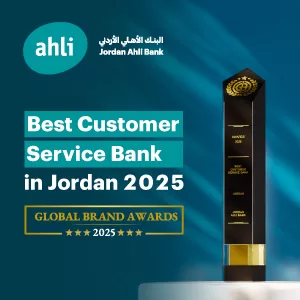Brand Strategy
The Influence of User-Generated Content on Your Reputation

Let’s break this down: User-generated content (UGC) is the game-changer in today’s digital landscape. It’s those reviews, tweets, and video testimonials that pop up across the web. These aren’t just casual mentions—they’re your brand’s pulse. If you’re not actively managing UGC, you’re leaving your reputation in the hands of the crowd. Risky move.
What is UGC? Really.
UGC is any content—reviews, photos, posts—created by people who aren’t your marketing team. It’s raw, unfiltered, and sometimes, brutally honest. And that’s why it matters. It influences others’ perception of your product, service, or brand.
Why UGC is Essential (No, Seriously)
In the last few years, UGC has transformed how brands are perceived. Social media and review platforms have amplified voices like never before. “UGC is the modern word-of-mouth,” says Johann Dietrich, a digital strategist out of Berlin. It’s not just hype—79% of consumers trust online reviews as much as personal recommendations. Think about that. It’s influentiLog Outal.
The Upside: Trust, Engagement, and Marketing Fuel
When UGC is positive, it’s a powerful asset. Builds trust. Engages audiences. Gives your brand some serious credibility.
Building Trust, Establishing Credibility
Here’s the deal: People trust real experiences more than your glossy ad campaigns. When someone leaves a glowing review, it’s like a trust badge. “Authentic user content holds more weight than any crafted marketing message,” says Clara Esposito, a reputation management expert in Milan.
A customer posts a rave review on Instagram about your product. Their followers see it, ask questions, and suddenly you’ve got a wave of organic attention. That kind of endorsement sticks. It’s impactful.
UGC sparks conversations. One customer’s story becomes a discussion among many. “Customer involvement is the key to brand loyalty,” notes Yuki Matsuda, a Tokyo-based customer engagement strategist. And once people are talking, they’re engaging. That’s where community forms.
UGC = Cost-Effective Marketing
UGC is basically free advertising. User content acts as organic promotion, spreading the word without you spending a dime. “It’s like a marketing hack,” says Rafael Silva, a branding consultant in São Paulo. Brands can showcase user-generated photos, testimonials, and stories on their own channels. It makes your messaging more relatable. More human.
The Downside: When UGC Bites Back
But let’s not gloss over it. UGC isn’t all sunshine. Negative content can damage your brand if left unchecked.
Negative Reviews: The Landmines
Bad reviews are UGC too. And they can do some real damage. According to Lena Braun, a customer relations consultant in Munich, “A single negative review can steer potential customers away.” Handling these reviews isn’t just about damage control; it’s about showing your commitment to improvement.
Quick Fix: Respond promptly. Acknowledge the issue, offer a solution. This simple act shows you’re listening, that you care.
The Wild West of Uncontrolled Content
Not every post about your brand is flattering. Some are off-topic, some inappropriate. “Uncontrolled UGC can dilute brand messaging,” says Carlos Garcia, a digital content strategist in Barcelona. It’s a wild card, and it’s out there shaping perceptions.
Solution: Moderate. Many platforms offer tools to monitor and flag inappropriate content. Use them.
The Viral Nightmare
Social media can amplify negativity like nothing else. One bad review or post can go viral, leaving your reputation in tatters overnight. Liang Chen, a crisis comms expert in Shanghai, warns, “Once negative content spreads, it becomes significantly harder to control the narrative.”
Plan of Action: Have a rapid response plan. Address viral negativity quickly to minimize fallout.
How to Manage UGC (and Come Out Winning)
A solid strategy is crucial to leveraging UGC. Don’t just hope for the best—make a plan.
Satisfied customers often just need a nudge to share their experiences. Ask for reviews, launch a branded hashtag campaign. “A subtle prompt can spark a flood of positive UGC,” says Maria Gutierrez, a customer experience lead in Buenos Aires.
Engagement shows you’re paying attention. Thank those who share positive content. Address negative feedback directly. You’ll be surprised how quickly this builds goodwill.
Monitor what’s being said about your brand. “Use tracking tools to keep tabs on brand mentions,” advises Marco Rossi, a digital engagement guru from Rome. It’s not micromanaging—it’s being aware.
Get Professional Help When Needed
Managing UGC can feel like a full-time job. Consider partnering with a reputation management service if it becomes overwhelming. “Bringing in pros allows you to focus on core business while maintaining control of your brand’s narrative,” says Ana Costa, a branding expert from Lisbon.
The Long Game: Crafting a Resilient Reputation
UGC can make or break you. Positive user interactions build a solid foundation of trust. And over time, an active, managed online presence will enhance loyalty and perception.
UGC fuels ongoing conversations. Engaging with your audience keeps your brand at the forefront of their minds. “In the fast-paced digital world, relevance is sustained through interaction,” says Wei Li, a digital strategist in Hong Kong.
User-generated content isn’t optional—it’s fundamental. It shapes how others see your brand. Encourage the positive, address the negative, and stay on top of the narrative. If it’s too much to handle solo, don’t hesitate to bring in the experts. A proactive approach will keep your reputation strong and adaptive, long into the future.

























































